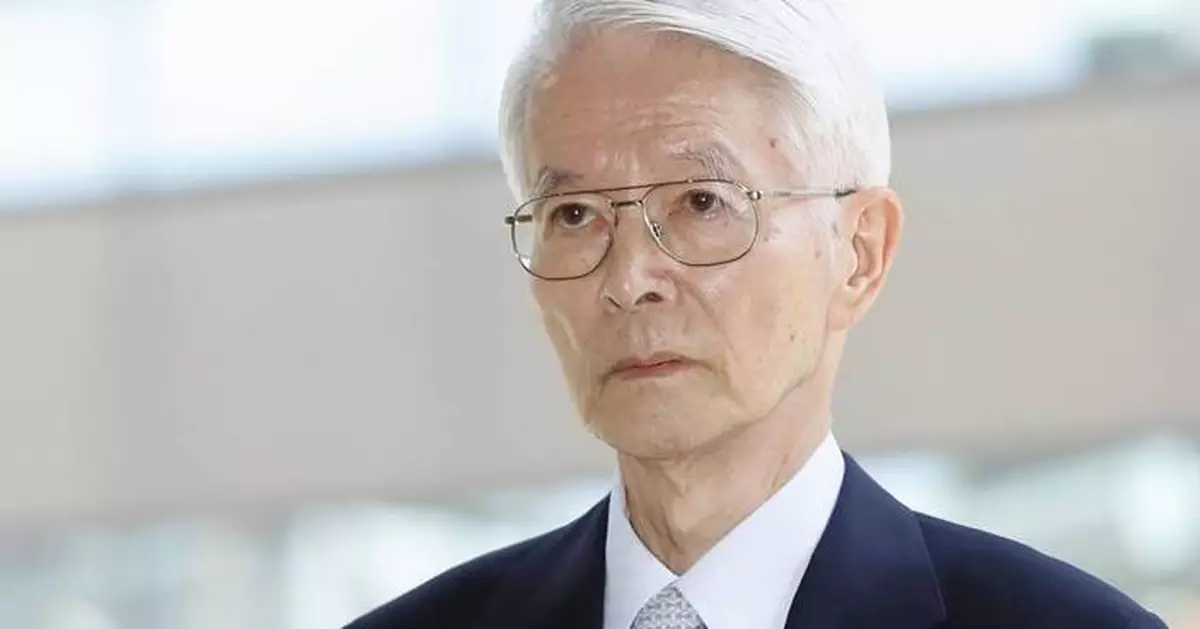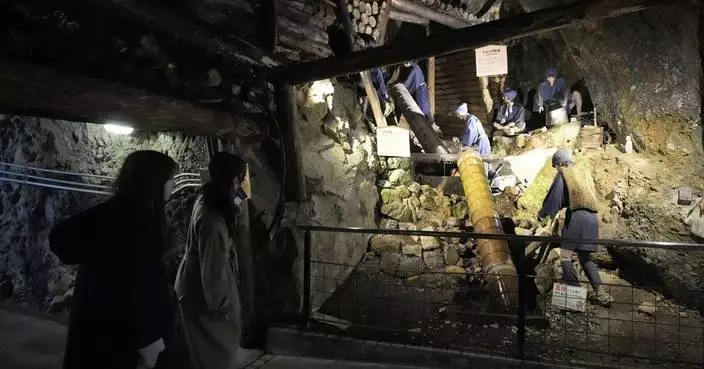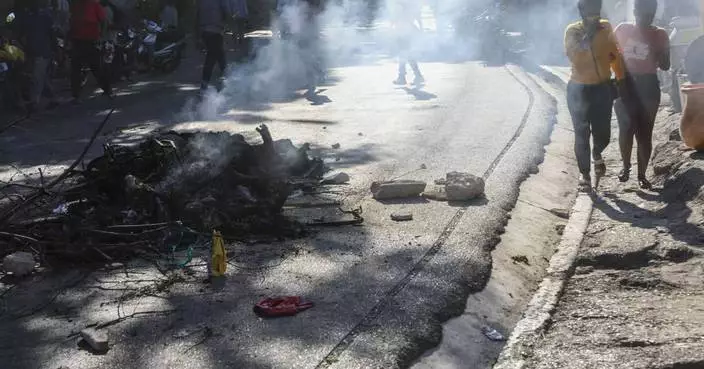TOKYO (AP) — Tokyo Electric Power Company Holdings' former chairperson, who led the emergency response after a meltdown at its Fukushima Daiichi nuclear plant and was accused of being responsible for failing to prevent the disaster as top management, has died, with his trials still pending. He was 84.
Tsunehisa Katsumata died on Oct. 21, TEPCO said Thursday, without providing further details including the cause of his death.
Katsumata was TEPCO chair when Fukushima Daiichi was hit by a magnitude 9.0 earthquake and tsunami in March 2011 and suffered triple meltdowns. He led the emergency response after the company's then-president stepped down due to health problems and served until mid-2012.
He later became one of the defendants in high-profile criminal and civil lawsuits seeking TEPCO management's responsibility over their alleged failure to anticipate the massive quake and tsunami and to take preventive measures.
Nearly 6,000 Fukushima residents in 2012 filed the criminal complaint, accusing several former TEPCO executives, including Katsumata, of professional negligence in the death of more than 40 elderly patients during or after forced evacuations in the aftermath of the meltdown, which released large amounts of radiation to the surroundings.
After prosecutors dropped the case, Katsumata and two other former executives were indicted in 2016 by a citizens' inquest of prosecution and forced to stand trial in the only criminal case related to the Fukushima disaster.
Katsumata and two co-defendants pleaded not guilty, saying predicting the tsunami was impossible, and were acquitted in the district and high court rulings. The case is now pending at the Supreme Court.
Katsumata also faced a civil trial filed by a group of TEPCO shareholders and was ordered by the Tokyo District Court in 2022 to pay damages exceeding 13 trillion yen ($85 trillion) with three other former executives. The case is pending at Tokyo High Court.
Katsumata, who was president of TEPCO from 2002 to 2008, was also in charge of damage control and pushing corporate governance following the utility's earlier data coverup scandal. He joined TEPCO in 1963.
As head of the powerful utility, Katsumata also served key posts in business organizations, such as Keidanren, and had major influence over Japanese politics and industry.
Today, more than 13 years after the accident, Fukushima Daiichi is being decommissioned — a decades-long process that is still at an early stage.
In recent months, TEPCO has struggled to get a first tiny amount of melted fuel debris from one of the three damaged reactors using a remote-controlled robo t. If successful, the sample's return would be a milestone that could contribute to further research into analyzing the melted fuel and developing necessary technology to remove the 880 tons of melted fuel debris that remain inside the three reactors.

FILE - Tokyo Electric Power Co., (TEPCO) Chairman Tsunehisa Katsumata speaks during a news conference at the company's headquarters in Tokyo, Sunday, April 17, 2011. (AP Photo/Shuji Kajiyama, File)

FILE - Former Tokyo Electric Power Co. (TEPCO) chairman Tsunehisa Katsumata arrives at Tokyo District Court in Tokyo Thursday, Sept. 19, 2019. (Satoru Yonemaru/Kyodo News via AP, File)
DENVER (AP) — It hasn't been a typical fall for the northeastern United States.
Fires have burned in parks and forests around New York City. Towns and cities in a stretch from Portsmouth, New Hampshire, to south of Philadelphia had their driest three months on record, according to the Applied Climate Information System. Some reservoirs in the region are near historic lows.
Major changes need to happen to avoid critical shortages of water in the future, even if that future isn't immediate. As the climate warms, droughts will continue to intensify and communities should use this one as motivation to put in place long-term solutions, experts say.
“This is the canary in the coal mine for the future,” said Tim Eustance, executive director of the North Jersey District Water Supply Commission. “People should stop watering their lawns yesterday.”
Eustance wants New Jersey Gov. Phil Murphy to issue a drought emergency to increase people’s sense of urgency.
Here are some ways to stretch water experts said could become necessary in the Northeast.
One important place water is stored is under our feet. Groundwater has dropped significantly over the years in parts of Delaware, Maryland, New Jersey and New York.
Groundwater makes up about half of New Jersey's drinking water. Sprawl and concrete can make it tough for rain to replenish the water underground.
“New Jersey is ‘mall-landia.’ We have these giant parking lots that could be ways to reclaim water instead of having runoff,” Eustance said.
In some other parts of the country there is increasing use of permeable asphalt, concrete and pavers that allow water to percolate into the ground and back into the aquifer. It would be up to municipalities to require that, he said.
A faster way to replenish the aquifer is by injecting highly treated wastewater into it, something Los Angeles has been doing for years. It is dramatically adding to the city's available water.
Virginia Beach, Virginia, is also pumping highly treated water back into its aquifer, and Anne Arundel County in Maryland is trying to pass legislation that would allow the same.
In some places in the western U.S., getting paid to save water has long been an option. Some cities and counties pay dollars for every square foot of lawn torn out and replaced with native landscaping.
Those policies are not nearly as widespread in the Northeast, said Alan Roberson, CEO of the Association of State Drinking Water Administrators.
“The abundance has created a different perspective,” he said. This can make it hard to get people on board with conservation.
Upgraded water meters can give customers details about their water use and help them see where they can save money when drought doesn't feel as urgent, said Beth O'Connell, chief engineer for Anne Arundel County, Maryland.
The concept is simple: capture water from the sink, clothes washer, shower and toilet, treat it to a high standard and use it again for nonpotable purposes: It can be sent back through pipes to flush toilets, cool buildings, water yards or help raise water levels in a river or aquifer.
“One of the crimes I think, in America, is we use drinking water to water our lawns and flush our toilet,” Eustance said.
Zach Gallagher is CEO of Natural Systems Utilities, which designs, builds and operates water recycling systems. He also is the father of three kids and lives in New Jersey, so this drought hits close to home.
“I feel like I'm doing something that is going to be meaningful and leave something beyond for my children, and their children,” he said.
Reuse can be a tool for both drought and flood, he explained. When a building can reuse its own wastewater and discharge it directly into a body of water, it eases stress on a city's fragile sewer system, which is a common vulnerability in old coastal cities. It also reduces demand on new water.
Once open this summer, the company's redesign of the old Domino Sugar Refinery on New York’s East River will be able to treat 400,000 gallons (1.5 million liters) of wastewater a day, enough to cover a football field in nearly 15 inches (38 centimeters) of water. The cleaned water will be piped back into the new mixed-use buildings for flushing toilets, cooling and landscaping, with some of it discharged back into the river.
Nonpotable reuse has a growing footprint in the eastern U.S., but scaling it to a regional level should be the next focus, O'Connell said.
Planning for a future that includes extended drought can be costly. It could also require a shift in mindset from one of abundance to conservation, said Del Shannon, dam engineer and member of the American Society of Civil Engineers.
He has worked on water projects around the world and said many developing countries are focused on getting reliable water for crops and drinking.
“We need to treat our water and guard it as gently as those countries are."
The Associated Press receives support from the Walton Family Foundation for coverage of water and environmental policy. The AP is solely responsible for all content. For all of AP’s environmental coverage, visit https://apnews.com/hub/climate-and-environment.
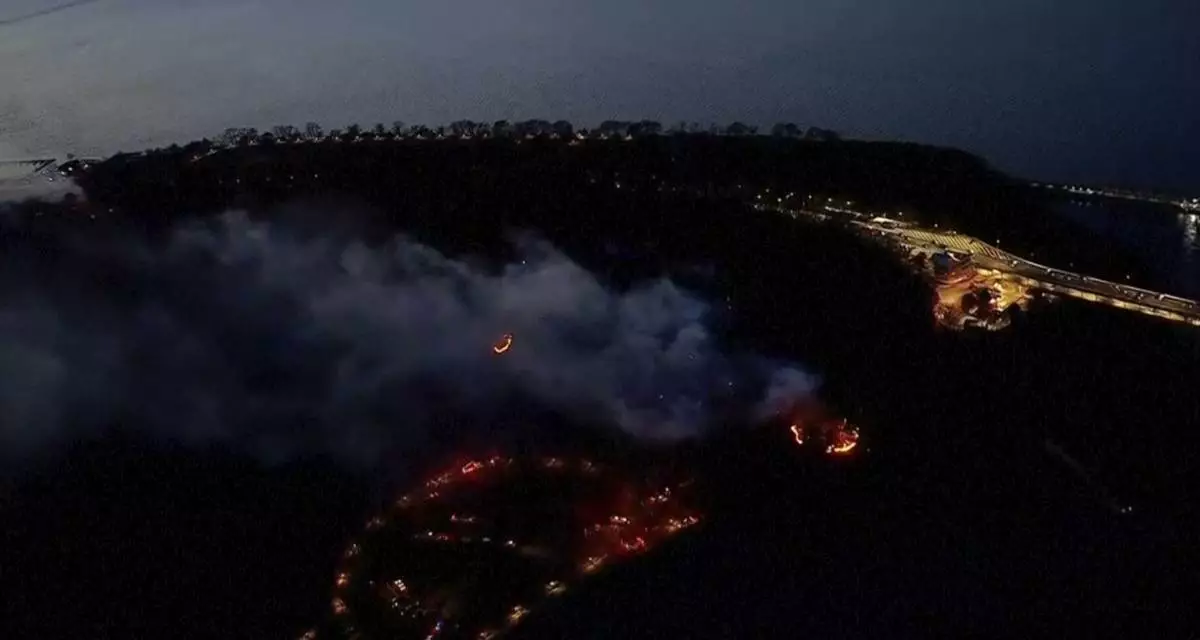
This aerial image taken from video shows a brush fire that broke out in a park on the northern tip of Manhattan in Inwood, N.Y., Wednesday, Nov. 13, 2024. (WABC-TV via AP)
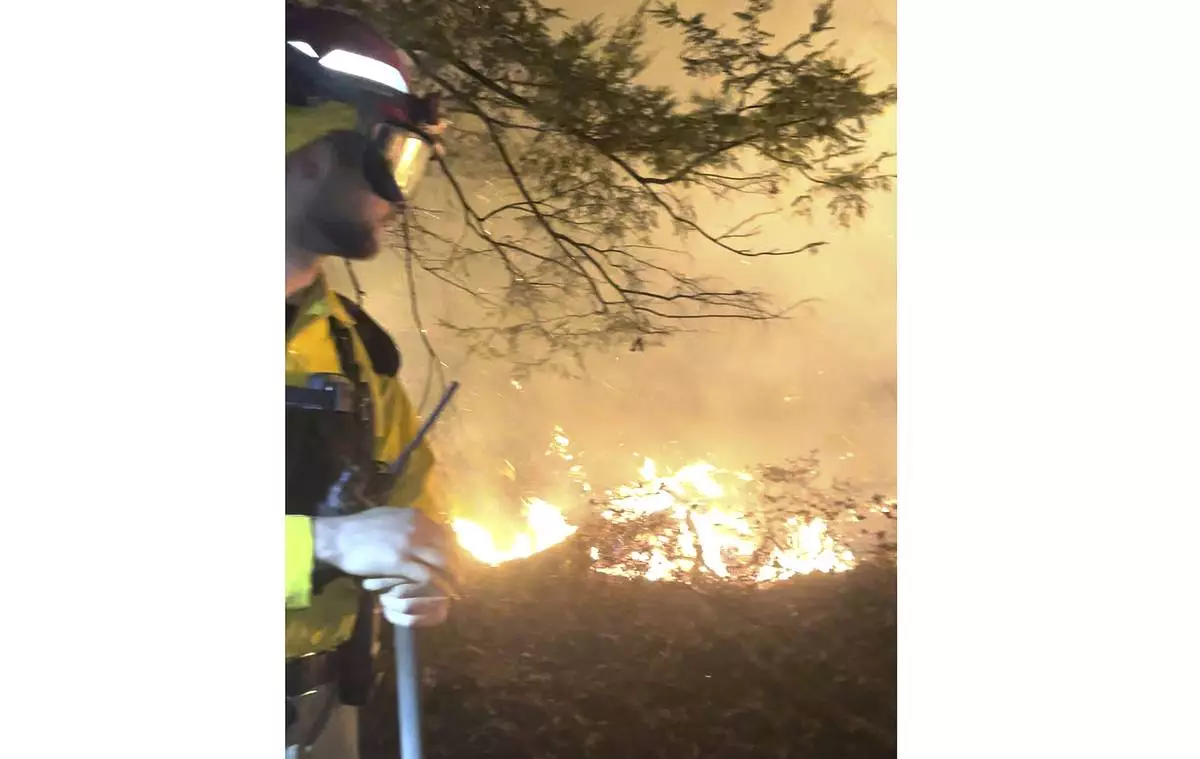
This image taken from video shows shows flames burning as a forest ranger works at the Jennings Creek wildfire, in Warwick, N.Y., Saturday, Nov. 16, 2024. (New York State Department of Environmental Conservation via AP)
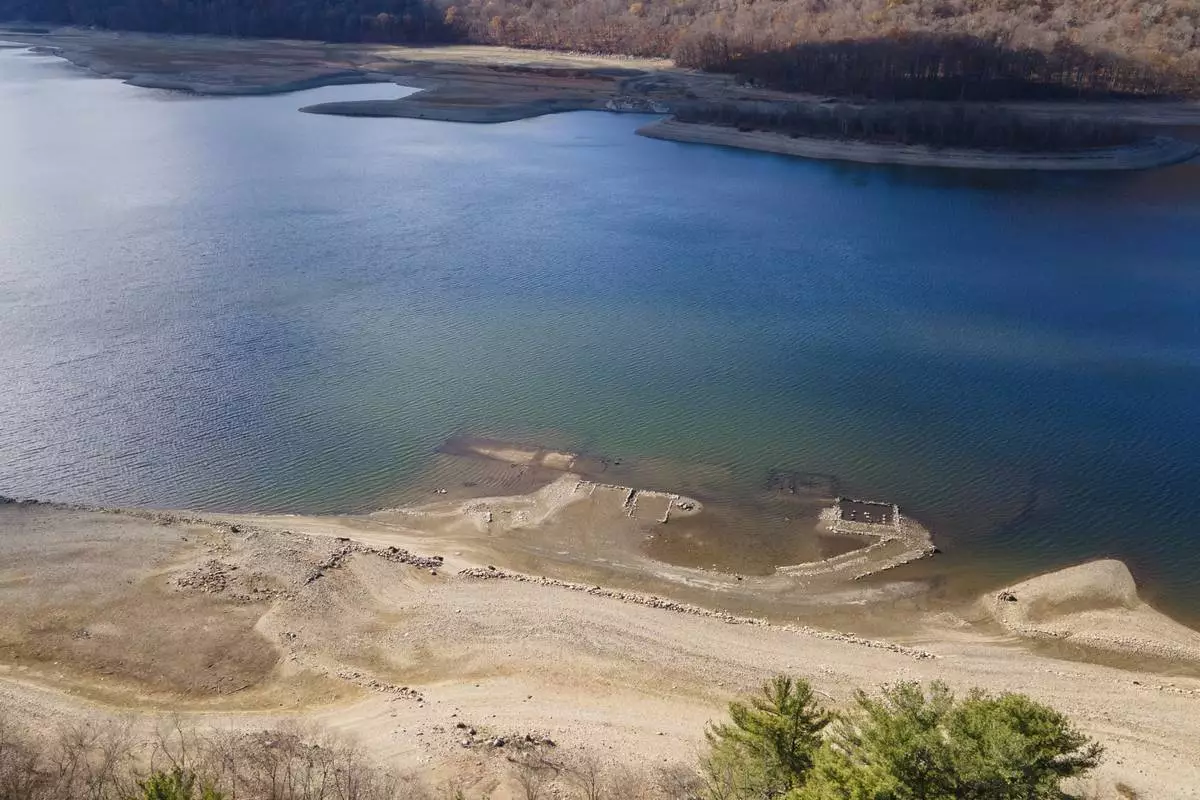
This Monday, Nov. 11, 2024 image shows the Wanaque Reservoir is in Ringwood, N.J. (AP Photo/Ted Shaffrey)
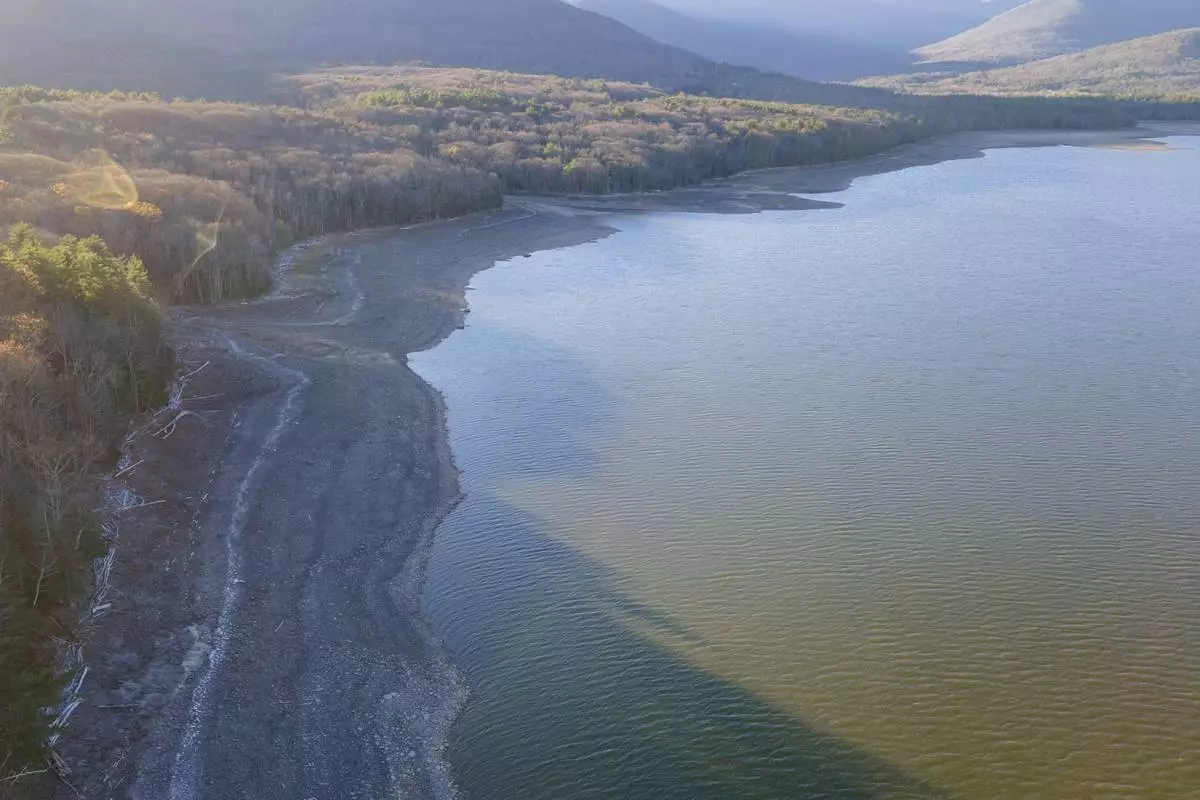
Dropping water levels expose the lake bed at the Ashokan Reservoir in Ulster County, New York, on Wednesday, Nov. 13, 2024. (AP Photo/Ted Shaffrey)
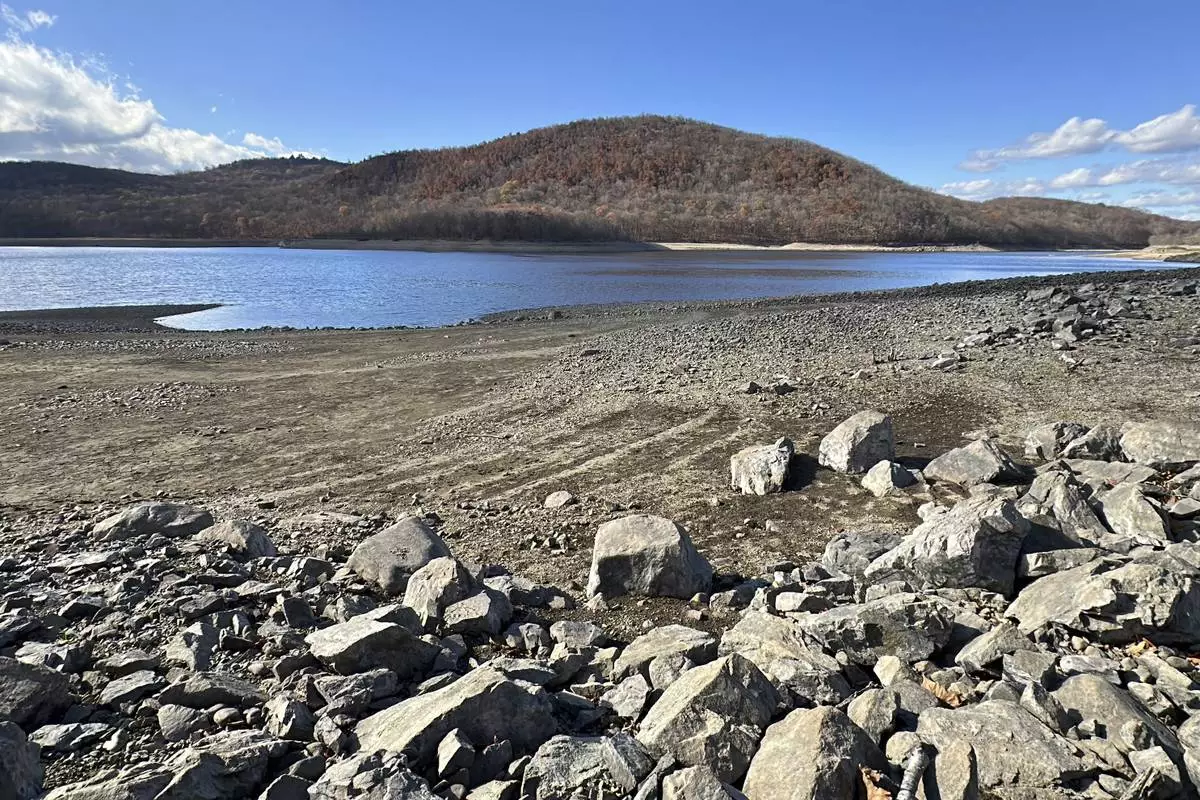
This Monday, Nov. 11, 2024 image shows the Wanaque Reservoir is in Ringwood, N.J. (AP Photo/Ted Shaffrey)




